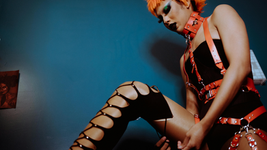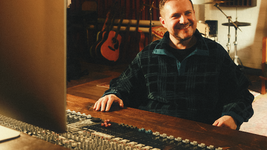'The Magic Flute' - Royal Opera House
- Olivia Kim
- Nov 5, 2019
- 3 min read
Last Friday, the Royal Opera House finally unveiled their captivating production of Mozart’s The Magic Flute (Die Zauberflöte). The opera tells the tale of Prince Tamino, who promises the Queen of the Night to rescue her daughter Pamina from Sarastro, with the help of bird-catcher Papageno. Upon Tamino’s eventual realisation of the Queen's evil nature, he undergoes a series of tests and trials with Papageno by his side, ultimately proving his worth and love for Pamina. Prince Tamino's journeys in love, rescue and enlightenment are beautifully accompanied by masterful stagecraft and memorable music. The sheer polyphony of the divergent aspects of the theatrical performance left the audience in a state of awe; from the rapacious Queen of the Night to the wise character of Sarastro, the narrative took the viewers on an excursion of sentimentalism and humour.

2552 [2] The Magic Flute production image (C) ROH 2019. Photographed by Tristram Kenton
The opera's magical presentation was highlighted by its use of props. The opening scene immediately captured the eyes of the audience with Prince Tamino fighting against a virulent serpent. The sheer immensity of the serpent—alongside its complex scales of details—epitomised the astoundingly intimidating nature of the creature. The performers’ precise control of the serpent’s ferocious movements added life to the prop. The flying carts rode by the three spirits were designed and exhibited with artistic mastery; the natural movement of the wings of the flying machine aptly reinforced the extraordinary essence of the opera. The careful selection of backgrounds also encapsulated the exact sentiments of specific scenes. From the blazing red backdrop of Sarastro’s entrance, to the pitch-black scenery of the ominous night-time, the production made inventive use of visual imagery, allowing the audience to feel the shared tension and spirit of the changing scenes throughout the narrative. Finally, the metaphorical presence of the flute accentuated a variety of central themes. The physical presence of the flute on stage symbolised power, communication and humour depending on the character. Its clean and airy sound strengthened the fairytale-like ambience of the entire performance.
The melodic and tuneful voice of the performers also captured the hearts of the audience. Pamina’s lyrical and mellifluous tune beautifully corresponded to her youthful and loving persona, while the richly penetrating sound of the Queen of the Night aroused an inevitable sense of admiration that dominated the entire theatre. Prince Tamino’s sonorous voice affirms his strength in character, whilst Papageno sang with moderately greater weight in his own. These distinct voices intricately blended to create musical unity that was thoroughly pleasing to the ear.

296 Tuuli Takala as Queen of the Night in The Magic Flute (C) ROH 2019. Photographed by Tristram Kenton
Prince Tamino’s pursuit of reason and wisdom accurately mirrored eighteenth century Enlightenment ideals. Tamino declared himself to be "human" during his first encounter with Papageno, eschewing status or ranking, an act rooted in Enlightenment notions of logic, liberty and individualisation. This is further reinforced by his later defiance of the Queen of the Night, seemingly a conscious move against his past naïveté. The opera as a whole is steeped in such themes, like many other works at the time it was written.
The characterisation of bird-catcher Papageno prompted chuckles from the audience. His sheer cowardice, coupled with his later acceptance of a hilarious promise of a wife, are a subversion of 18th century gender stereotypes. Papageno acts as comic relief throughout the opera, particularly during moments of dramatic tension. For instance, in the highly agitated state of the trials, Papageno’s ludicrous character allows the narrative to interlace elements of tension, emotion and comedy into a single work.

1283 Wu as Second Lady, Weissmann as Third Lady and Howarth as First Lady in The Magic Flute (C) ROH 2019. Photographed by Tristram Kenton
The Magic Flute will almost certainly appeal to an audience wishing to experience something beyond conventional performance, and to instead discover its labyrinthine twists of emotion and insightful themes embedded throughout the narrative.
Edited by Alexia McDonald, Head Digital Editor

































